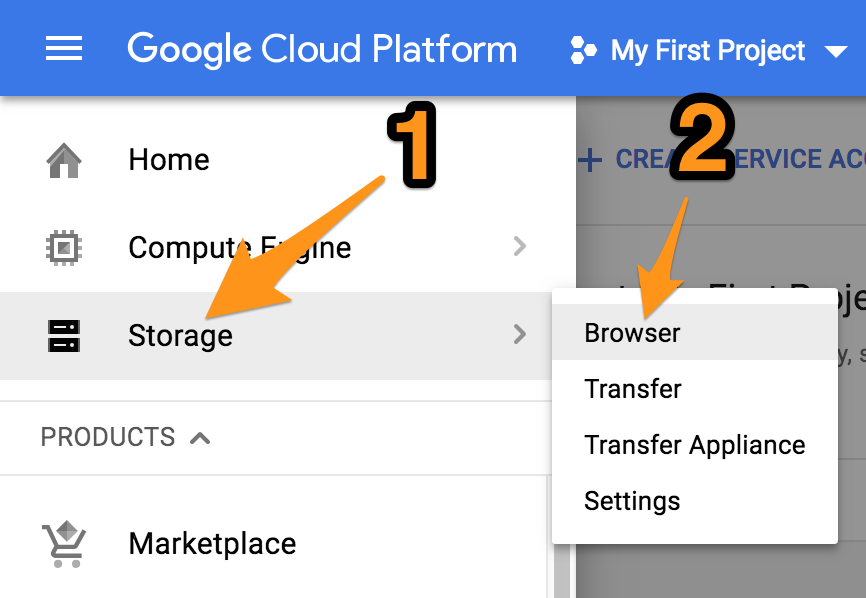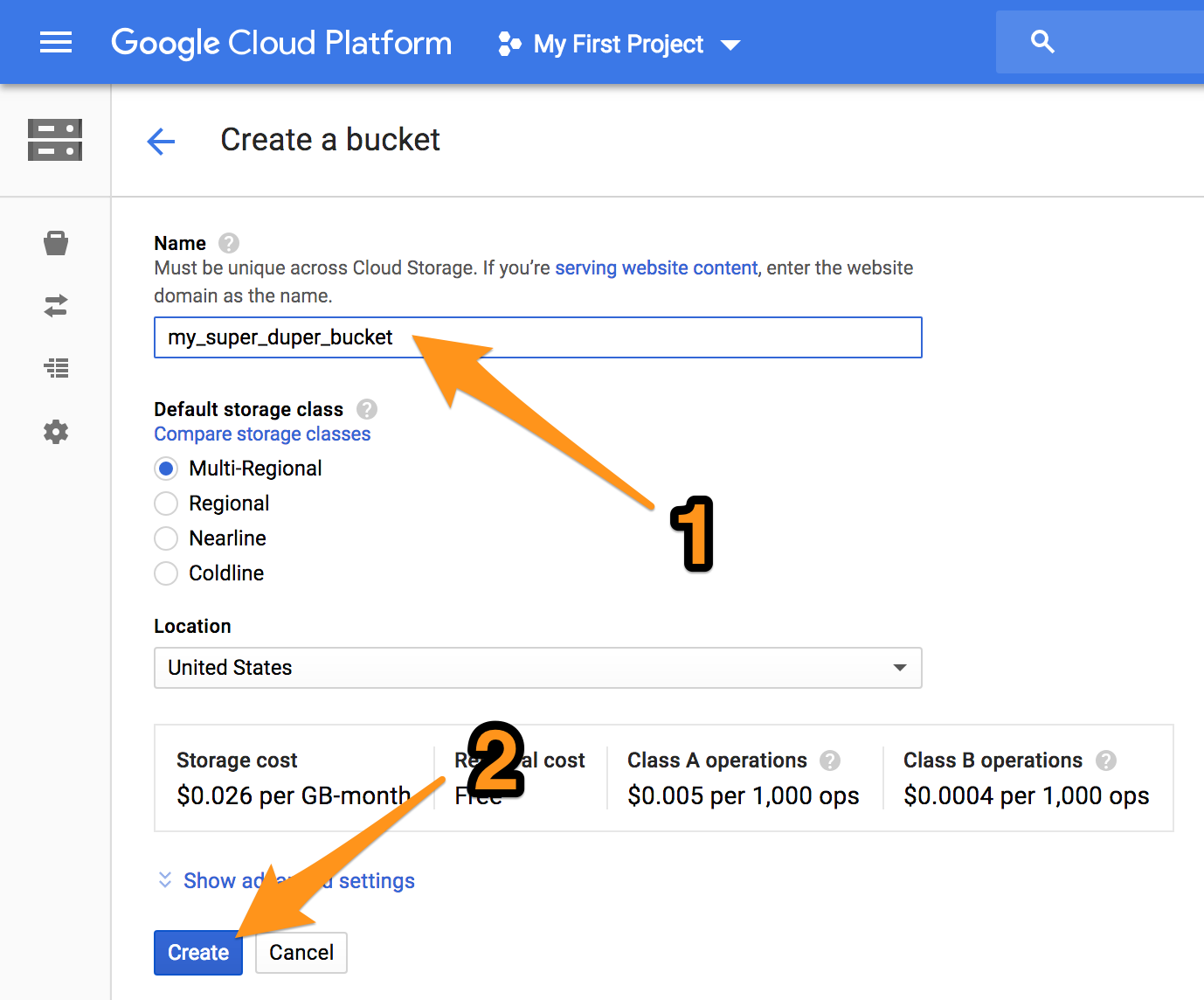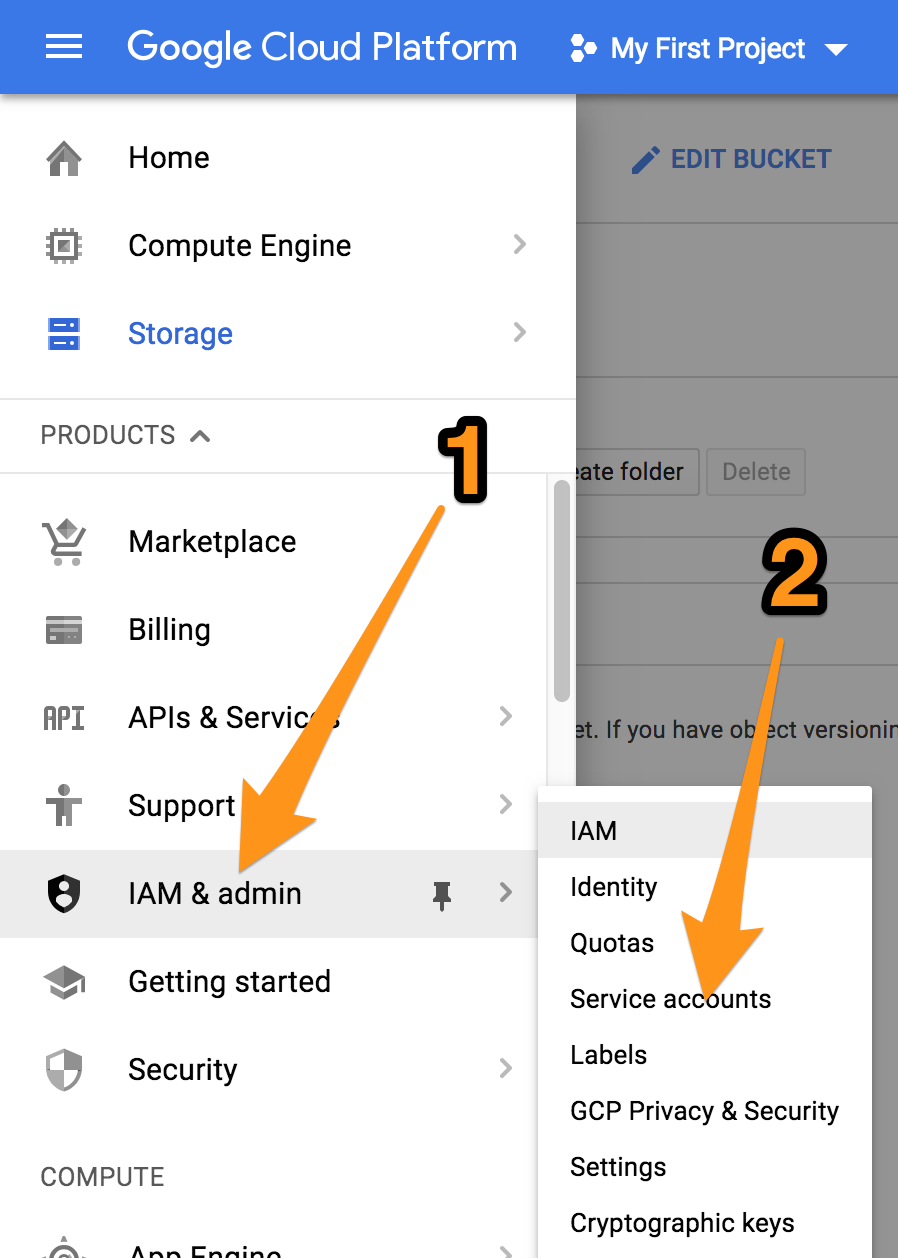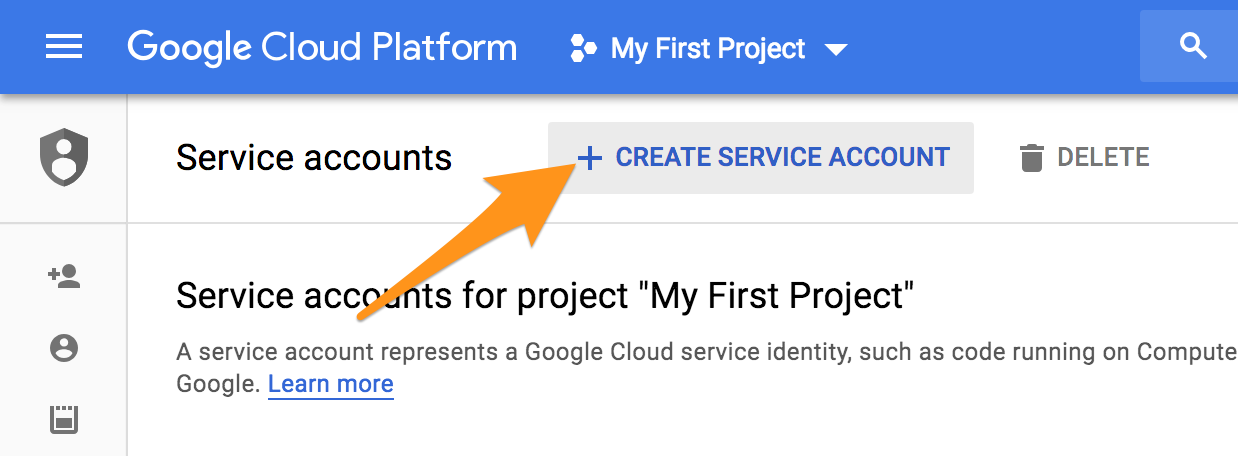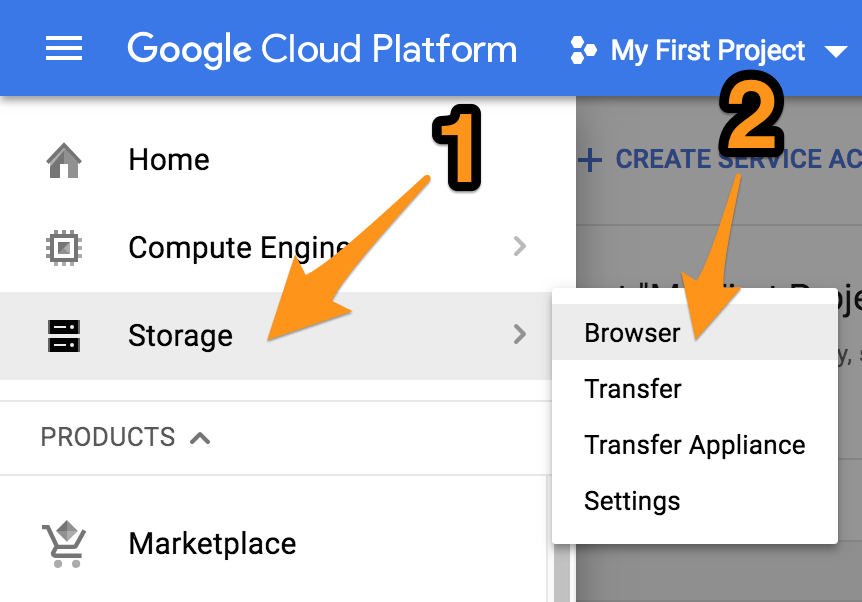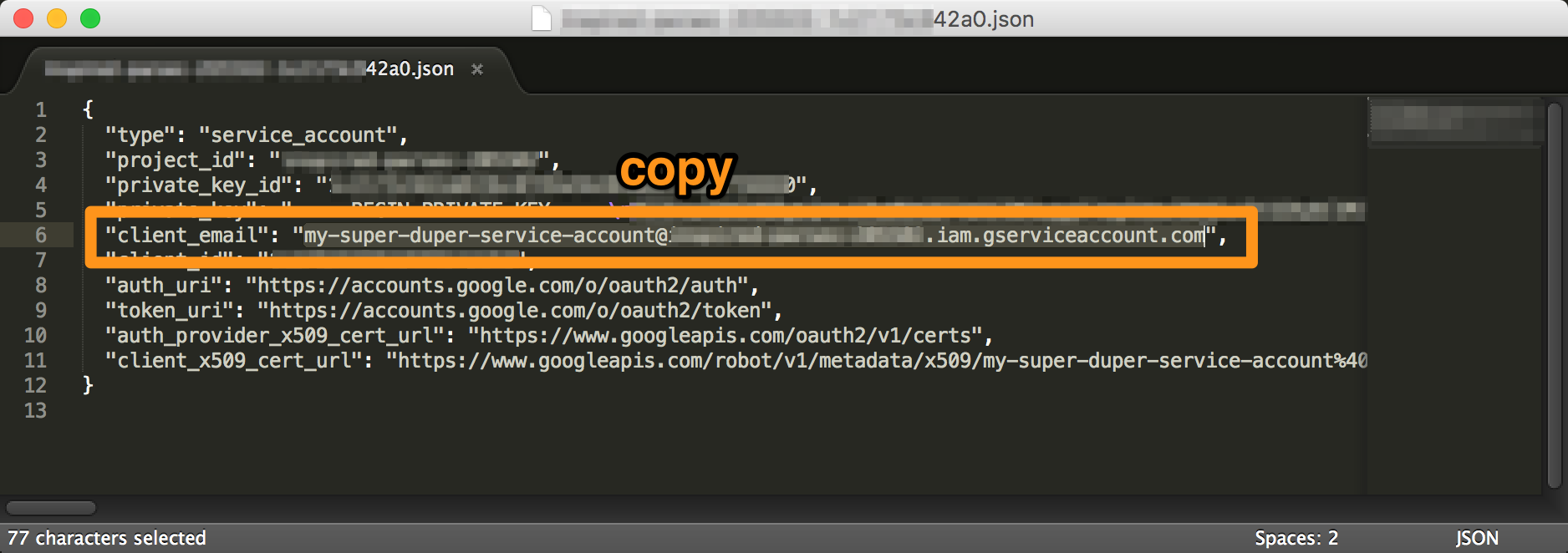Download
Google setup & use
1- Create a storage bucket for the script to upload into
Go to the Google Cloud Console, click on “Storage”, “Browser”.
“Create Bucket”
Give it a name and click “Create”.
2- Create a service account for the script
Expand the “IAM & admin” section, click on “Service accounts”.
Click “Create Service Account”.
Give it a name, check “Furnish a new private key”, JSON, and click “Save”.
Save the JSON credentials file which you are prompted to download into a safe location.
3- Grant “Object Creator” permissions on the bucket to the service account
Go back to the storage bucket you created
Edit its permissions
The JSON credentials file you just downloaded contains the email for the service account you created, copy it.
And paste it into the “Add members” field, select the permission to be “Storage Object Creator”. This service account doesn’t need permissions for anything else than dumping files in there. Not even viewing them.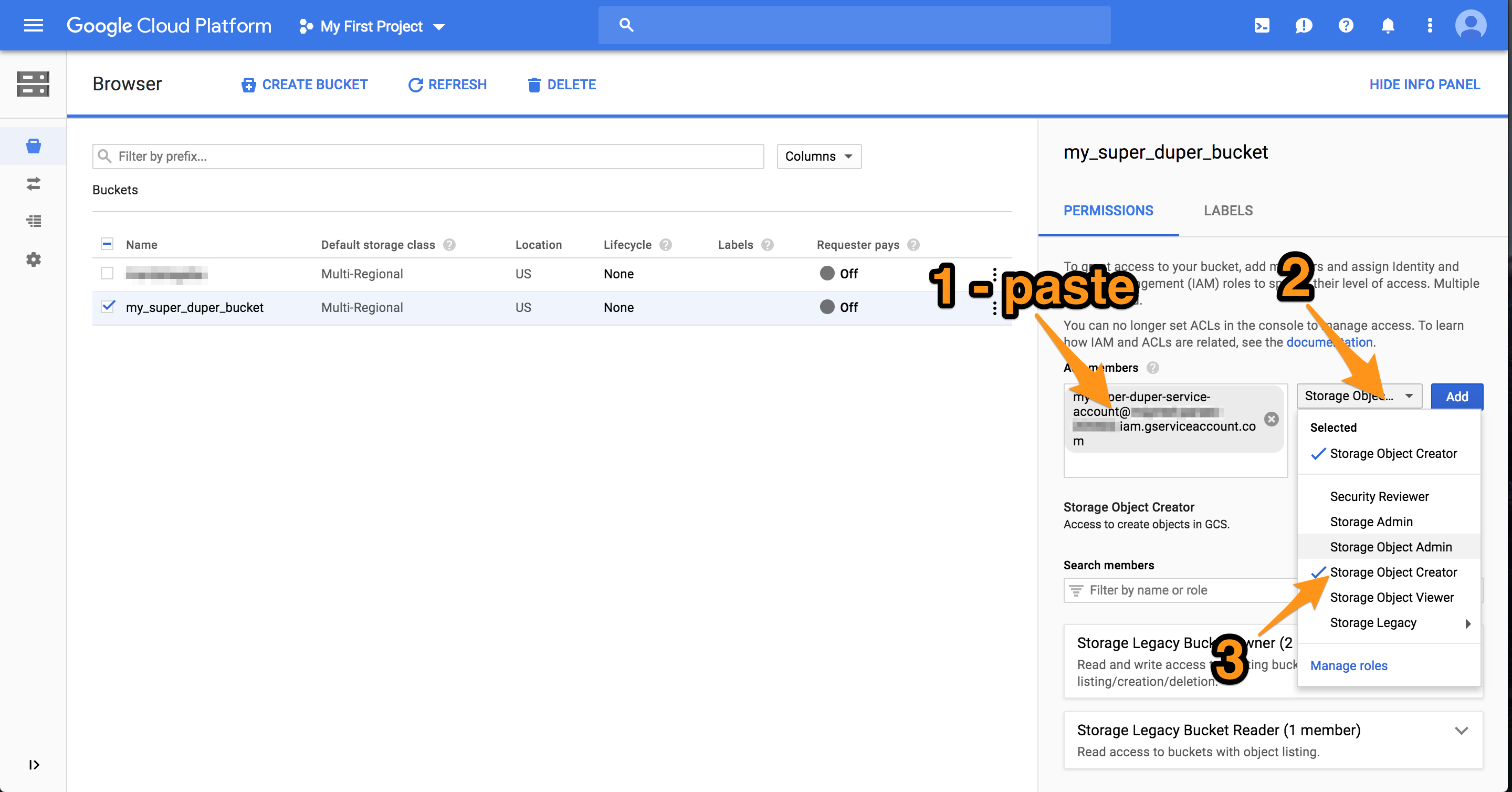
Optional: if you want the files uploaded by the script to be publicly viewable, add the permission “Storage Object Viewer” to the user “allUsers”. Accounts are all referred to by email in Google land, but there exist special keywords such as “allUsers”.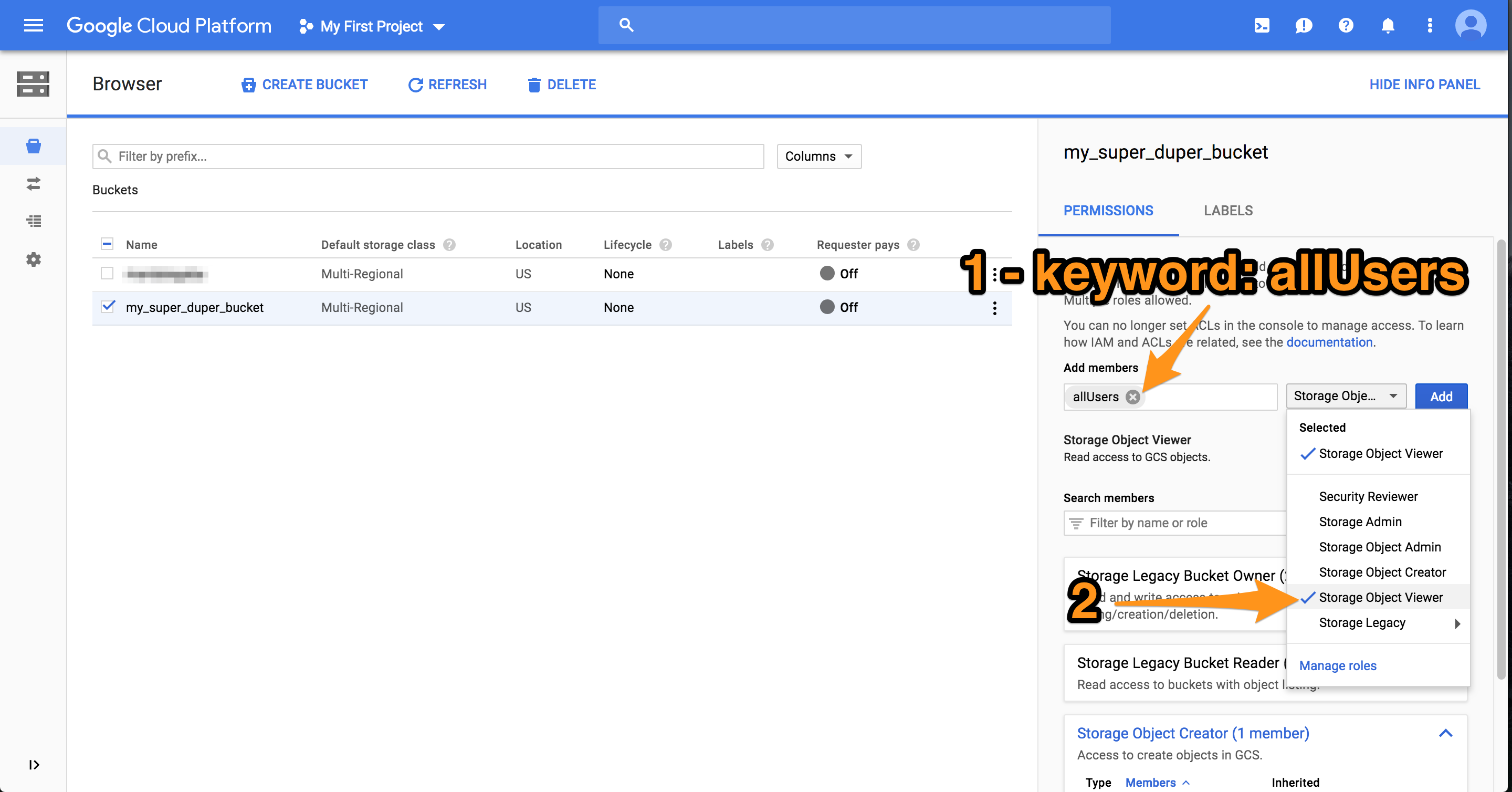
Done with the Google setup 🙂
4- Running the script
If you haven’t already, download the script at the top of this page. Decompress it and edit the config at the top.
$credentials_file_path is the full path to the JSON credentials file you got from Google when you created the service account. It should be a secure location.
$destination_bucket_name is the name of the bucket you created
$access_token_cache_file_path is a location where Google’s OAuth tokens are cached, it too should be a secure location.
Run the script with only 1 argument being the file you want to upload. The script can also be included and used outside of CLI, in that case simply call the upload( $filename ) function. 
The script returns the URL to the file in the bucket.
